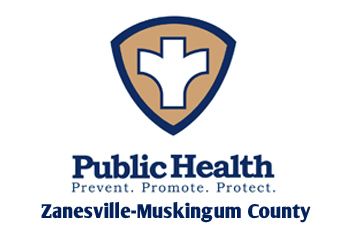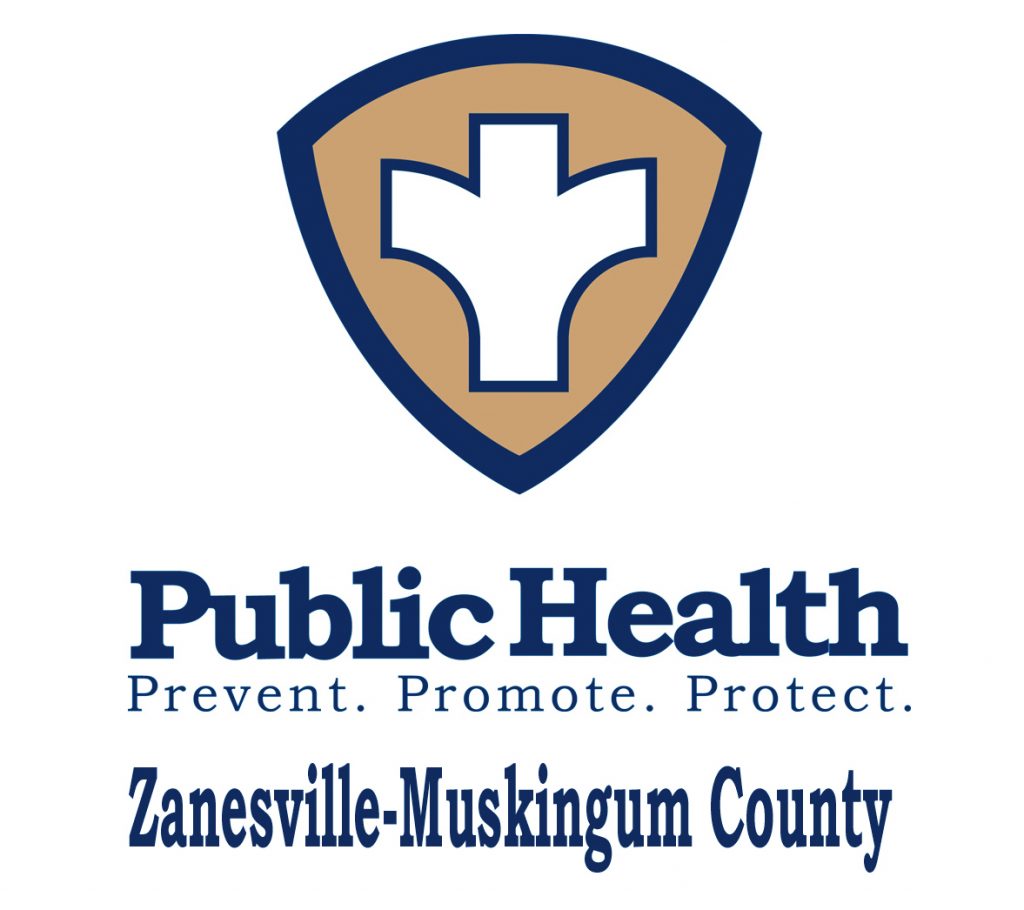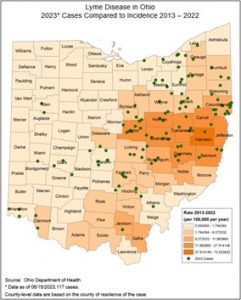Diseases spread by tick bites, especially Lyme disease, are becoming more common in Ohio. According to the Centers for Disease and Control (CDC), Lyme disease is the most common vector-borne disease in the United States. It is estimated that there are 20,000 to 30,000 cases per year throughout the nation. Lyme disease is an infection that is caused by the bacteria Borrelia Burgdorferi and rarely Borrelia Mayonii and is spread by infected black-legged ticks.
Although Lyme disease is the most common, ticks can spread other diseases such as rocky mountain spotted fever, anaplasmosis, babesiosis, ehrlichiosis, tularemia, southern tick-associated rash illness, and powassan virus. The Ohio Department of Health collects and analyzes data to monitor trends in disease activity within the state.
For more information on Lyme disease in Ohio, visit https://odh.ohio.gov/know-our-programs/zoonotic-disease-program/diseases/lyme-disease.
Tick Bite Prevention
Protect Yourself
- Know where to expect ticks (grassy, wooded, brushy areas).
- Avoid those areas. Walk in the center of trails.
- Wear an EPA registered insect repellent. Always be sure to follow product instructions. Click here to find an EPA registered repellant: https://www.epa.gov/insect-repellents/find-repellent-right-you.
- Treat clothing and gear with permethrin (registered by the EPA).
- Shower soon after being outside.
- Check for ticks daily.
- Tumble clothes in a dryer on high heat for 10 minutes to kill ticks on dry clothing after you come indoors.
Protect Your Pets
- Consult with your veterinarian about using tick preventatives for your pets.
- Check pets frequently for ticks. Be sure to check in and around ears, around eyelids, under their collar, under legs, between toes, and around their tail.
Protect Your Yard
- Reduce tick habitats.
- Remove old furniture, mattresses, trash, etc. from your yard. This reduces places for rodent carriers to live.
- Stack wood into neat piles and in a dry area to prevent rodent carriers.
- Make a 3-foot-wide gravel or wood chip path around wooded areas and patio areas to limit the travel ticks can make towards your home.
- Apply EPA registered pesticides around your yard.
- Mow your lawn frequently.
Tick Removal
Be sure to remove ticks promptly upon finding them.
- Use clean, fine-tipped tweezers to grasp the tick as close as possible to the surface of the skin.
- Pull upward with steady, even pressure. Be sure to remove the entire tick.
- After removing, clean the area with soap and water.
- Do not crush a tick with your fingers. To dispose of a live tick, put it in alcohol, place it in a sealed bag or container, wrap it tightly in tape, or flush it down the toilet.
Symptoms to Watch for
Following a tick bite, be aware of symptoms that may indicate that a disease is present.
Symptoms include fever, chills, headache, fatigue, muscle and joint aches, and skin rash (erythema migrans).
If experiencing any of these symptoms, it is best to contact your medical provider and seek advice immediately. Those treated for Lyme disease during the early stages of infection are normally cured with antibiotics within 2-4 weeks. Please note that a small bump following a tick bite is normal and should disappear within 1-2 days. If left untreated, Lyme disease may spread to one’s heart, joints, and nervous system.
Handouts
Tick Education Handout for Pregnant Women
Education Material
Tick Education Crossword Puzzle for Children
Other Resources
Centers for Disease Control and Prevention Tick Information https://www.cdc.gov/ticks/
Ohio Department of Health Lyme Disease https://odh.ohio.gov/know-our-programs/zoonotic-disease-program/diseases/lyme-disease


